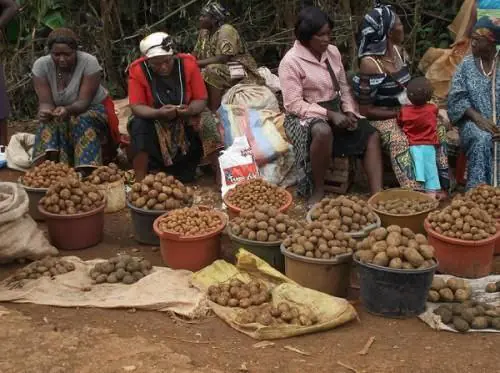By Beatrice Manka’a
The Ministry of Agriculture and Rural Development (MINADER) has pledged to support potato farmers in the West Region in an effort to boost potato production and enhance food security.
The aim is to help them reach a production milestone of 1 million tons, a target set to meet the growing demand for potatoes in the local market.
The call for increased agricultural productivity was made by the Minister of Agriculture and Rural Development, Gabriel Mbairobe, during a potato exhibition held at the esplanade of the Bangang Royal Palace in the West Region.
Minister Mbairobe commended the agricultural diversity of the Bamboutos Division and promised that his Ministry would provide necessary support to help farmers achieve the ambitious production target.
“I noticed the agricultural diversity of Cameroon here in the Bamboutos and precisely in Bangang,” he said.
“We have plantain, maize, Irish potatoes, beans, cabbage, and many other food crops grown here. We also noticed that there is a huge potential here in this division. So we are encouraging farmers to continue this way so that this place can be an agricultural hub for Cameroon.”
“I think by helping them with inputs like fertilizers, we can achieve our national potatoes production objectives, which stands at 1,000,000 tons a year. Apart from the Potato plantations from Messang to the border between the Bamboutos in the West and Wabané in the South West,” added the Minister during his 22-day working visit.
Currently, over 40 percent of the 180,000 tons of potatoes produced annually in the West Region come from Bangang, a village in Batcham Subdivision of the Bamboutos, known for its rich black soil.
However, despite the area’s potential, potato production in Cameroon is dominated by the West and North West regions, which collectively account for 80 percent of national production, according to data from GIZ’s Green Innovation Centers for the Agriculture and Food Sector project (GIZ-Procisa).
Despite the significant contribution from these regions, national potato production has fluctuated between 220,000 and 400,000 tons over the past decade, falling short of the annual average demand of 1 million tons in the local market.
Experts attribute this gap to challenges such as difficult access to quality seeds and the underutilization of improved seeds.
Traditional seeds yield only 7-13 tons per hectare, while improved seeds have the potential to yield 20 to 40 tons per hectare.



